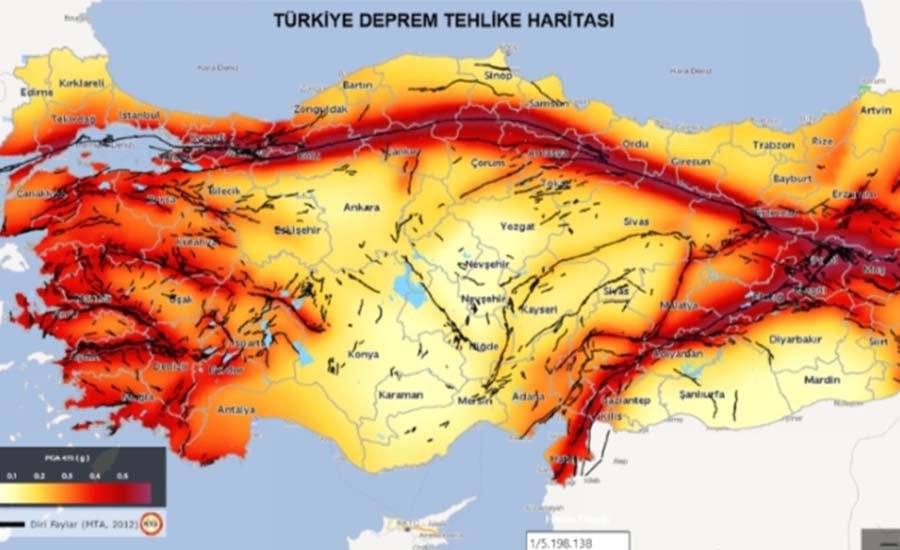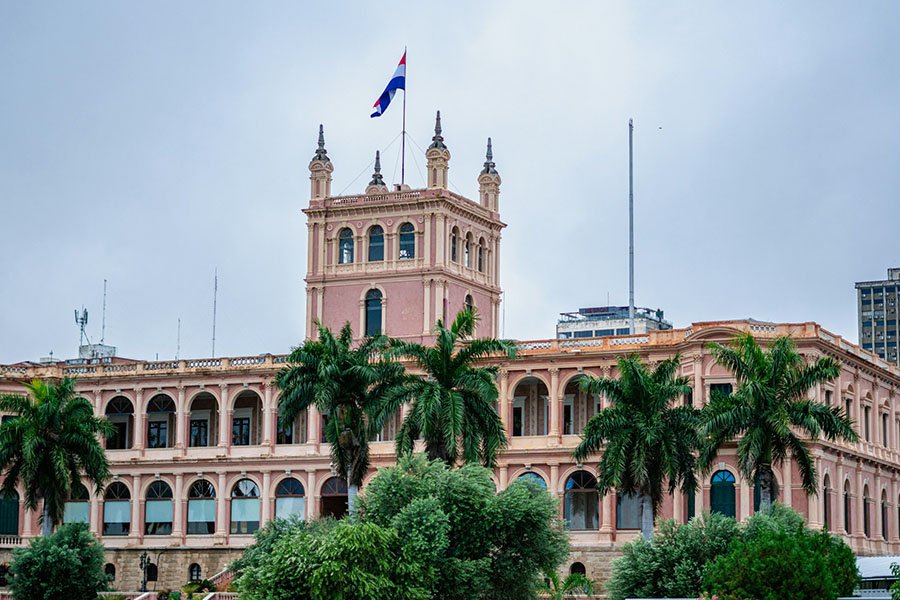Turkey at the Epicenter of Seismic Risk: 100 Earthquakes a Day

Photo: Haberturk
In Turkey, more than 18,000 earthquakes were recorded in the first six months of 2025, according to Daily Sabah citing national seismological services. This figure has almost reached the annual norm of 25,000. On average, there were one hundred tremors a day – four per hour – and experts warn that such activity creates an extremely high risk for Istanbul, the Sea of Marmara, and other locations.
Earthquake Geography
According to the publication, the total number of earthquakes in half a year reached 18,191, significantly higher than usual levels for this period. Among them, 206 tremors had a magnitude of 4.0–4.9, eighteen exceeded five points, and three were stronger than six. The most destructive was a 6.2-magnitude earthquake on April 23 in the Sea of Marmara near Istanbul – it caused panic among residents of the metropolis. In total, two people have died and 452 were injured due to seismic activity since the beginning of the year.
The geography of earthquakes confirms that the threat is complex. Mugla province became the leader in the number of tremors, with significant activity also recorded in Malatya, Kutahya, Kahramanmaras, and in Istanbul itself. Moreover, epicenters appeared in regions previously considered relatively safe. In Ankara, earthquakes were felt on February 17 and June 29, while in the Kulu district of Konya tremors occurred on May 15. Experts note that seismic risk is not limited to traditional zones but may also manifest in central parts of the country.
Specialist attention is focused on the Sea of Marmara. The North Anatolian Fault, one of the most dangerous in the world, runs through this area. In early July, several consecutive tremors of 3.9–4.3 magnitude struck near Gemlik, and on July 5, a 3.8-magnitude earthquake was recorded off Silivri on the Kumburgaz segment.
Experts emphasize that not only the northern but also the southern branch of the fault remains a serious threat. Bulent Ozmen, professor at Gazi University’s Faculty of Engineering, noted that this segment represents a so-called “seismic gap,” meaning the probability of a strong earthquake here is especially high. He added that Turkey, together with its marine zones, is crossed by about one thousand active faults. Events in Ankara and Konya clearly demonstrated that vulnerabilities exist even in areas where the population is not accustomed to such phenomena. The widespread belief that these places are protected, according to the expert, does not correspond to reality.
Hazard Zones According to AFAD
Istiklal published updated AFAD seismic hazard maps. The document also cites nearly one thousand active faults and confirms that many regions are classified as high-risk zones.
Among the most dangerous areas, experts include Istanbul and the following provinces:
Elazig, Erzincan, Tokat;
Amasya, Kastamonu, Cankiri;
Karabuk, Duzce, Bolu;
Sakarya, Yalova, Kocaeli;
Canakkale, Balikesir, Bursa.
In these provinces, fault lines pass through or near city centers, increasing the likelihood of serious destruction in the event of a strong earthquake.
High activity also persists in zones including Izmir, Mugla, Erzurum, Konya, and the following locations:
Aydin, Denizli, Manisa;
Kayseri, Kutahya, Eskisehir;
Hatay, Osmaniye, Bingol.
Experts identify three major seismic lines – the North Anatolian Fault, the East Anatolian Fault, and the West Anatolian Fault. Each is capable of generating destructive tremors. The presence of such extensive zones of instability makes almost the entire country vulnerable. For densely populated regions such as Istanbul, Izmir, and Bursa, this risk is compounded by dense development and heavy infrastructure loads, which multiply the potential scale of disasters.
Active Fault Map by MTA
The General Directorate of Geological Research (MTA) presented an updated Diri Fay Haritasi map showing the distribution of active faults across Turkey. Haberturk reported that the document highlights the most vulnerable areas and makes it possible to assess the potential strength of tremors.
According to this source, 485 active fault segments have been identified across 45 provinces, capable of producing earthquakes of magnitude 5.5 and above. Regions of the highest first-degree risk include Izmir, Mugla, as well as:
Balikesir, Manisa, Aydin;
Denizli, Usak, Bursa;
Bilecik, Kocaeli, Duzce;
Sakarya, Bolu, Karabuk;
Erzincan, Tokat, Amasya, Hatay.
The list also includes other provinces where fault lines are close to settlements, increasing the likelihood of large-scale destruction.
Second-level risk applies to Istanbul, Van, Kahramanmaras, Adiyaman, Bitlis, and several other regions where the threat is high but faults do not pass directly through urban centers. The third group includes Antalya, Eskisehir, Tekirdag, Edirne, Sinop, and Giresun, where fault activity is lower but risk remains.
Areas with minimal hazard include Konya, Karaman, Ankara, Nevsehir, Nigde, Aksaray, Kirklareli, Sinop, and some parts of the Black Sea coast. Nevertheless, experts stress that even in these provinces, noticeable tremors are possible due to the proximity of major fault lines. For example, there are no live faults within the borders of Istanbul and Ankara, but nearby active segments still create a high risk of strong earthquakes if ruptures occur.
Earthquakes Over 125 Years
According to DHA, between 1900 and 2025 Turkey experienced 7,554 earthquakes of magnitude above 4, of which 111 measured 6 and above. This 125-year record clearly shows that strong tremors recur regularly and cause devastating consequences.
One of the most tragic events was the 1939 Erzincan earthquake, magnitude 7.9, which claimed 32,968 lives and left hundreds of thousands homeless. The largest disaster of the late 20th century was the Izmit earthquake on August 17, 1999, which killed 17,480 people.
In the 21st century, the tragedies continued. The most devastating event in modern history occurred in February 2023, when southeastern provinces were struck by a series of tremors of 7.7 and 7.6 magnitude. There were 50,783 deaths, more than 100,000 injuries, and millions were forced to leave their homes.
At that time, more than 5,700 buildings (400,000 apartments) collapsed across Turkey. Investigations uncovered serious violations: hundreds of developers and contractors were accused of using defective concrete, ignoring seismic standards, and negligence. According to the Association of Construction Laboratories, about 26% of tested concrete samples did not meet standards, and in some cases, the share of substandard material reached 67%. This is why the destruction was “total” – buildings collapsed completely, not partially, as usually happens during tremors.
The tragedy negatively affected Turkey’s economy in general and the real estate market in particular. Foreigners, who had been actively buying apartments in Antalya, Alanya, and Istanbul in previous years, sharply reduced purchases: in February 2023, Russian applications fell by 41%, and rental requests dropped by 60%. Turks themselves began moving en masse to safer regions, primarily coastal cities with lower seismic activity.
Preparedness for Disasters
Turkey’s real estate market has yet to regain foreign investor confidence. In 2024, home sales to foreigners fell sharply – down 32.1% compared to 2023 – and their share of the market dropped to about 1.6%. In the first seven months of 2025, foreigners completed 11,267 property transactions in Turkey, 12.1% fewer than in the same period of 2024. In July, foreigners bought 1,913 housing units (-18.6%), just 1.3% of all deals.
Experts link this decline to political and economic instability in the country, numerous restrictions, and higher financial thresholds. High inflation also reduces profitability. The constant threat of earthquakes further undermines market attractiveness.
Experts warn that disaster preparedness must remain one of Turkey’s top priorities. Even weak earthquakes create a cumulative effect, impacting the durability of buildings, bridges, and infrastructure. In conditions of high population density, especially in Istanbul and coastal areas of the Marmara Sea, any violations of construction norms or lack of preventive measures multiply the scale of the threat. Key tasks include modernization of the housing stock, strict quality control in construction, development of early warning systems, and raising public awareness.
Подсказки: Turkey, earthquakes, seismic risk, Istanbul, Marmara Sea, Mugla, Izmir, Malatya, Kutahya, Kahramanmaras, AFAD, MTA, real estate











